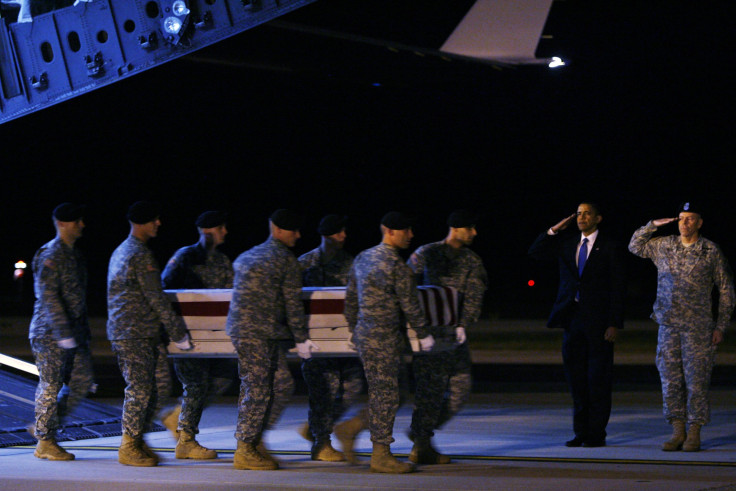Maj. Gen. Greene's Final Journey Home Highlights Return Of Soldiers Killed In Combat

The fatal shooting of Maj. Gen. Harold Greene by an Afghan soldier at the Afghan Military Academy in Kabul on Tuesday set off a chain of events that will end with Greene's body traveling nearly 7,000 miles back to the United States, beginning Wednesday and continuing into Thursday.
At the Air Force base in Dover, Delaware, the public will then see Greene's flag-draped coffin being unloaded from a C-17 transport plane -- a poignant moment that is more raw than it appears. The transfer boxes that carry soldiers' remains actually preserve the moments of their deaths, including the clothes they were wearing at the time. The cleanup, preservation and, if necessary, autopsy of soldiers' bodies does not take place until they reach U.S. soil.
Up to that point, the journey is the same regardless of the soldier's rank or the manner in which he or she died.
Since hostilities began in 2001, 2,340 U.S. military personnel have been killed in Afghanistan and have made that journey. Before each of their bodies made its way onto transport planes home, they often had to be extracted from dangerous environments -- the mountainous Hindu Kush or the Taliban-patrolled areas of Helmand Province. Often, retrieving the body is as dangerous as the fight itself, and often it is impossible to distinguish.
In Afghanistan, the bodies of American soldiers end up at the same point of embarkation, and their paths home are largely the same whether the deceased was a private or a general. That will change only after they reach the U.S.
“They go to the mortuary collection point in the theater of operations to be prepared for transfer for transit back to the United States,” said Christen Michaud, public affairs specialist at the Air Force Mortuary Affairs Operations Center. “And then they stop at Ramstein Air Force base in Germany just to collect some fuel and continue to Dover Air Force Base, Delaware.”
Each branch of the military has its own mortuary affairs unit, but as a rule the Army deals with bodies in war zones and the Air Force takes over once they arrive back in the U.S.
“When the remains arrive back in Dover, typically the soldier is still wearing his uniform and the gear they were in when they were killed," Michaud said.
Inside the flag-draped box, known as a transfer case, the soldier's appearance at the time of death is preserved. On average, one such body has arrived in the U.S. every two days since the war began in 2001.
Once off the aircraft, the transfer case is carried to the mortuary and the process of preparing the body for the family begins. Typically, Michaud said, “They start by having an autopsy, then they are embalmed and dressed in their uniform. And once they’ve been returned to their family and loved ones, the body goes off to the final resting place.”
At that point, as will be the case with Maj. Gen. Greene, the paths diverge.
After returning the body to the family, the military regimen gives way to personal choices, the first being the family's decision whether to have a private or a military funeral, the latter of which is offered to all service members who die in combat. According to U.S. Army regulations, Maj. Gen. Greene will receive a full-honor funeral consisting of one company (normally, two platoons) of soldiers and a band. General officers may also receive a cannon salute.
© Copyright IBTimes 2024. All rights reserved.












